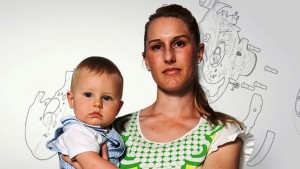
Toyota is backing off national incentive advertising in favor of a brand image campaign. Meanwhile, record incentives continue.
Toyota Motor Sales, U.S.A. is promoting its so called Star Safety System, which combines five technologies as standard equipment on all new Toyota models as part of a new national advertising campaign in its latest attempt to increase sales. (See Toyota Incentives Slow, But Don’t Halt U.S. Slide)
The marketing program has Toyota owners and engineers talking about safety and quality via television, print, digital (www.toyota.com/safety), radio and outdoor advertising media.
The Star Safety System includes Vehicle Stability Control (VSC), Traction Control (TRAC), Anti-lock Brake System (ABS), Electronic Brake-force Distribution (EBD) and Brake Assist. All of these technologies are in widespread use by most automakers, but not necessarily bundled together in one package across the entire line. Whether this matters to individual buyers, who buy one vehicle at a time, is debatable, but from a corporate marketing perspective Toyota needs to bolster its safety image.
Toyota is still feeling the negative effects of its failure to recall millions of Toyota and Lexus models in a timely manner for unintended acceleration. (See Toyota Broke Law! NHTSA Seeks Maximum Fines) As a result of its violation of U.S. law, Toyota Motor was fined a record $16.4 million for its failure to act on the problem and for not notifying the National Highway Traffic Safety Administration (NHTSA) of a deadly pedal defect for almost four months.
Toyota still faces additional consequences because of an ongoing investigation by NHTSA for its corporate behavior concerning unintended acceleration and other safety matters. (See NHTSA Ups Toyota Death Tally) Further civil or criminal penalties are possible.
“From Yaris to Land Cruiser, Toyota is the first full-line manufacturer to combine these five key accident-avoidance technologies as standard equipment on every model,” said Bob Carter, Toyota Division group vice president and general manager. “Toyota customers tell us they want to know more about the Toyota safety story, and the Star Safety System is just one of the features that reassure them about the safety and quality of our vehicles.”
All five Star Safety System components feature so-called accident-avoidance technologies, including:
- Vehicle Stability Control (VSC), which helps prevent wheel slip and loss of traction by reducing engine power and applying brake force to the wheels that need it. Toyota VSC is typical in the industry as it monitors steering angle and the direction a vehicle is traveling, and it senses when the front or rear wheels begin to slip. When VSC senses this loss of traction, the system reduces engine power and applies braking to the individual wheels that need it, in order to help keep the vehicle on its intended path.
- Traction Control (TRAC) helps maintain traction on wet, icy, loose or uneven surfaces by applying brake force to the spinning wheel or wheels. Sensors are activated when one or more wheels start to slip. The system is designed to limit engine output, applies the brakes to the spinning wheel(s), and transfers power to the wheels that still have traction.
- The Anti-lock Brake System (ABS) helps prevent brakes from locking up by “pulsing” brake pressure to each wheel in order to help the driver maintain control in emergency-braking situations. Without ABS, emergency braking can cause brakes to lock up and cause a vehicle to skid. Sensors detect which wheels are locking up and prevent the lockup by “pulsing” the brakes at each wheel independently. Pulsing releases brake pressure repeatedly for fractions of a second – a reaction time not possible for humans. This keeps the wheels rotating and helps the driver to avoid going into a skid.
- Electronic Brake-force Distribution (EBD) is another common industry practice. EBD helps keep a vehicle more stable and balanced when braking. During an abrupt stop, momentum can cause a vehicle to tilt forward, reducing the brake force of the rear tires. EBD responds by redistributing the braking. Wheels with more braking effectiveness receive more brake force and wheels with less effectiveness receive less brake force, helping to prevent brake lockup. EBD adjusts for changing loads. Sensors recognize the extra weight cargo and rear passengers put on the rear axle, so brake pressure on rear wheels is increased.
- Brake Assist is designed to detect sudden or “panic” braking and add the full pressure needed to help prevent a collision. If a driver fails to apply enough pressure to the brake, the Brake Assist sensors will detect this sudden or “panic” braking and add pressure. This additional pressure can help the driver avoid hitting the object.

What’s been exposed so far is only the tip of the iceberg. Other models also need to be recalled. I lost $8,500 re engine failures in MR2 Spyders, finding out too late about Toyota’s policy of keeping defects quiet. Right on for the racketeering charges – I’m glad to see the public shying away from Toyota.